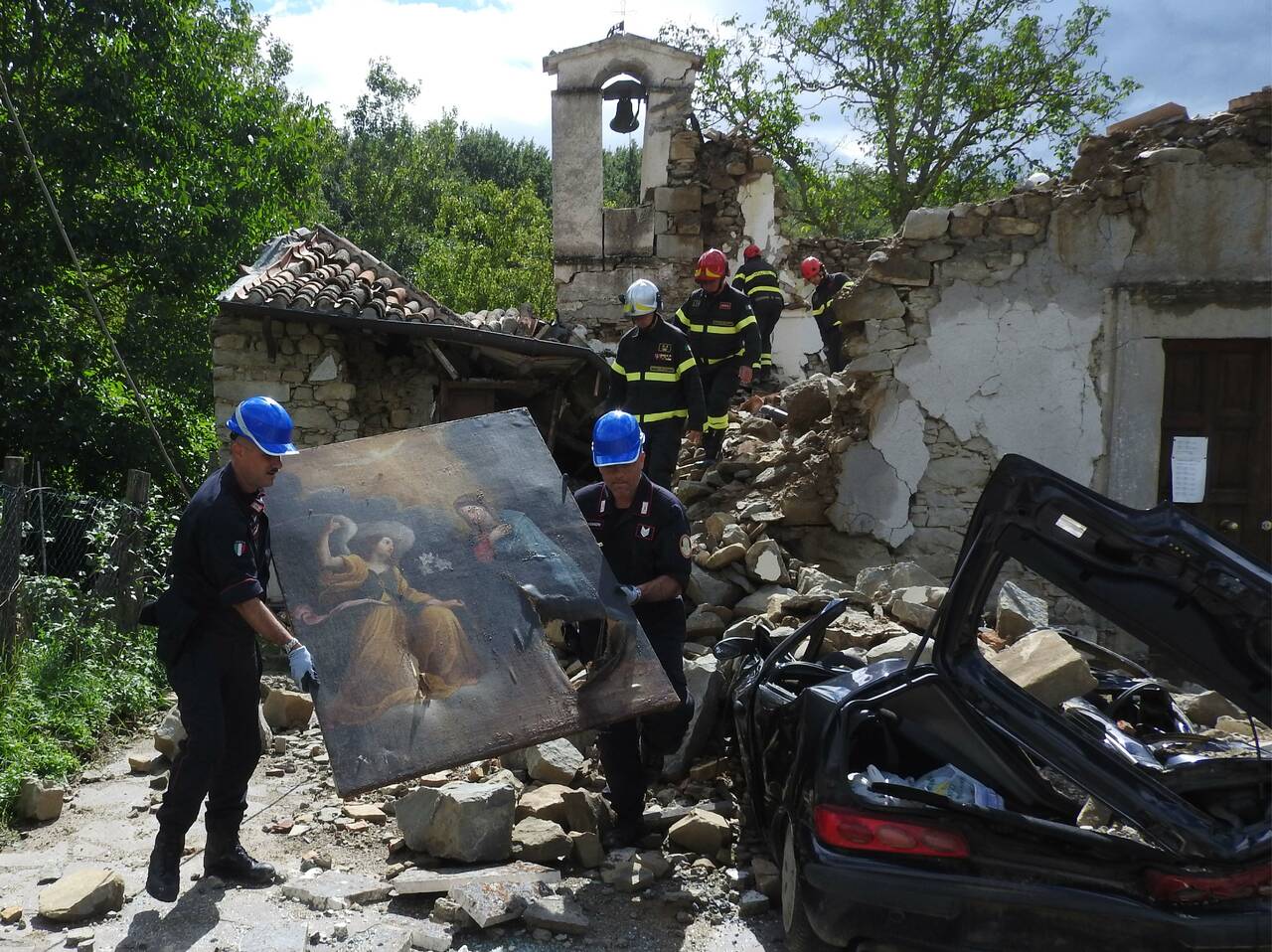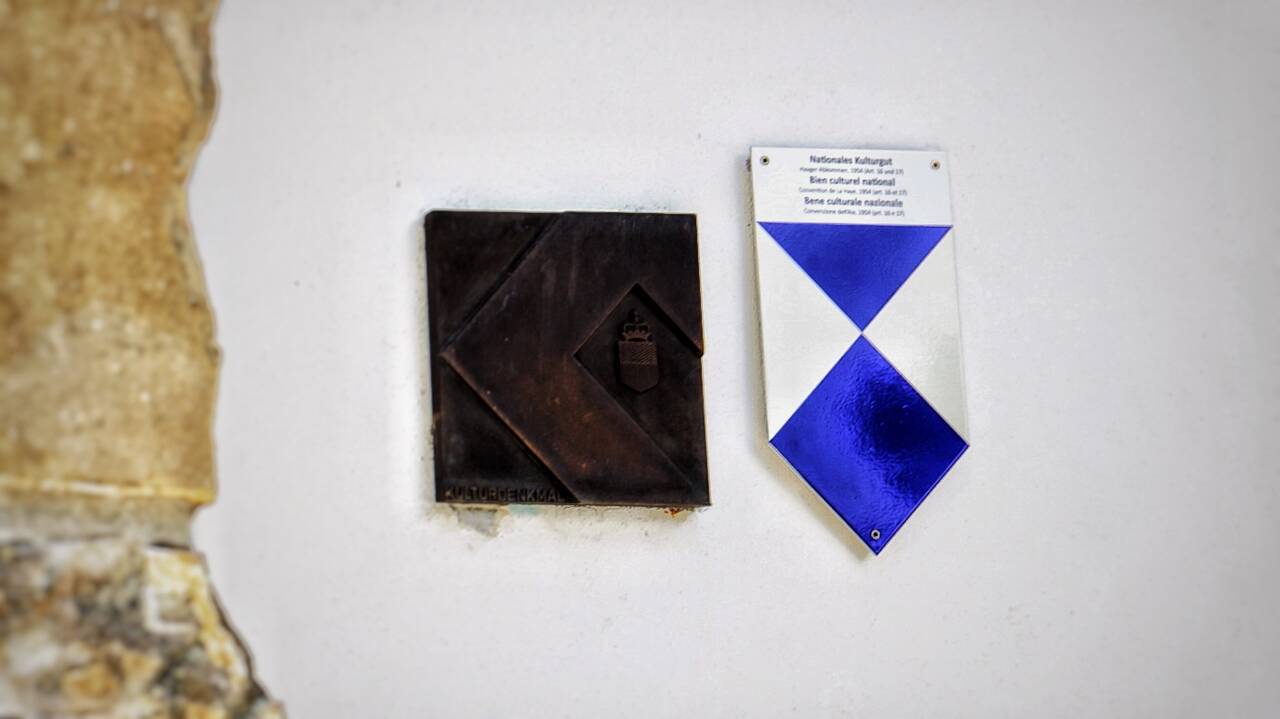Protection of cultural property in the event of damage
The preservation of identity-forming cultural property as part of the cultural heritage for future generations is one of the central tasks of our society. Hazards that can cause their damage, destruction or even their disappearance are omnipresent. They range from simple events such as accidents or fires to extraordinary situations such as natural disasters or armed conflicts. Considering that, preventive and reactive measures are necessary to protect cultural property.
Legal basis
The protection of cultural property rests on a foundation of international law, which was laid down in the Hague Convention of 1954 expressed within the framework of the international law of war. Liechtenstein ratified this convention in 1960 and its 2004 supplement in 2016. In national legislation, the Law on the Protection, Preservation and Maintenance of Cultural Property of 2016 the mandate for the preservation of historical monuments to protect cultural property not only in "normal" but also in "special" and "extraordinary" situations in the best possible way and in cooperation with other responsible actors. Building on that, the Cultural Property Protection Ordinance of 2021 provides details on the protection of cultural property and specifies preventive as well as reactive measures.
Requirement for the protection of cultural property
Numerous damaging events in recent years, such as earthquakes, fire incidents or floods, have prompted cultural property managers worldwide to gear their KGS structures not only to scenarios relevant to armed conflict, but also to expand them to include non-military threats. Bodies such as civil protection and emergency first response organizations thus became vital partners of public and private cultural property managers.
In Liechtenstein, adopting those best practices requires special steps. Unlike our neighbors, the country has no established operational structures that can take up and implement this issue. Therefore it is necessary to develope a cultural property protection system in order to ensure the ability to cooperate efficiently and effectively with relevant institutions when needed.
Cultural Property Protection Structures in the Principality of Liechtenstein
The focus is on the public and private owners of cultural property of national and international importance listed by inventories and the owners responsibility for the protection of their objects. They are assisted by the Bureau of Protection of Cultural Property within the Office of Cultural Affairs, which serves as an interface to civil protection and to emergency first response organizations. In order to ensure cultural property protection measurse reaching from preventative steps up to operational interventions as a response on damaging incidents, a strong support by the infrastructural and logistical keyplayers of national structures and by the municipalities is needed. Therefore, it is mandatory to rely on existing structures and to create new synergies.
Cultural Property Protection Network
In order to enable rapid assistance for cultural property in damaging events in Liechtenstein, a Cultural Property Protection Network had to be developed. Members are public and individual private owners of cultural property such as cultural institutions, which pool their special skills and resources. In case of need, each member can thus be sure of a broad range of support. In order to operationalise such skills and resources at site of a damaging event, the network maintains its own operational structure and various emergency capacities. Depending on the case or event, this spectrum can also be expanded by external specialists and support staff through service agreements. The aim is to offer and conduct annual training courses as well as realistic exercises within the network under the direction of the Bureau of Protection of Cultural Property.
Emergency planning for cultural property
One of the most important preventive measures for the protection of cultural property is the preparation of emergency plans. The identification of hazards relevant to individual cultural assets and the reduction of the associated risks are the basis on which response options are prepared. This applies equally to movable and immovable cultural property. The implementation of contingency planning, consisting of a Fire Department Response Plan and a Cultural Property Protection Response Plan, and creating an emergency response structure are a manageable effort for property owners to ensure protection during damaging events.
The guideline "Cultural Property Protection in the Principality of Liechtenstein" was created specifically for this task. It consists of three parts geared on each other:
-
Part 1: Cultural Property Protection in the Principality of Liechtenstein
brick.linklist.external_link.screenreader
-
Part 2: Priorisation and Risk Management for Cultural Property in the Principality of Liechtenstein
brick.linklist.external_link.screenreader
-
Part 3: Emergency Planning and Emergency Structures for Cultural Property in the Principality of Liechtenstein
brick.linklist.external_link.screenreader
Before starting an emergency planning, it is recommended to contact the responsible person for cultural property protection of the respective municipality and the Bureau of Protection of Cultural Property. During this process, general conditions and the necessary scope of work are determined. A safety analysis is the basis for the fire department response plan, the cultural property protection response plan and the emergency structure, which is prepared on the basis of the guidelines. Finishing these documents, they are presented and submitted to the Bureau of Protection of Cultural Property. After checking for completeness and feasibility, the completed emergency plan is presented to the responsible fire department and the responsible person for cultural property protection of the municipality.
Further protective measures
In addition to the personnel organization of cultural property protection at all levels of the state and municipalities as well as in all cultural property institutions, the formation of a cultural property protection network and emergency planning for cultural property, further concrete protection measures are already being prepared in peacetime or in "normal times" (i.e. before the occurrence of an actual damaging event).
- Labeling with the "Blue Shield" allow, in addition to indicate the importance of the cultural property, increasing the awareness in society.
- Inventories allow to record the totality of immovable and movable cultural property.
- Safeguarding documentation allows the restoration and reconstruction of damaged or destroyed cultural property. In the worst case of total loss, they form at least a scientific necrology.
- Shelter for cultural property are already used for the storage of important cultural property. Expanding this capacity is a medium- and long-term aim.
- Training enables the responsible persons for cultural property protection to ensure appropriate protective measures.
Outlook
By creating an institutionalized KGS, Liechtenstein is moving on a par with KGS organizations already established in neighboring and European countries. The country can thus act as a partner in bi- or international cooperations. This creates a transfer of know-how, which can be expanded into a multinational security network for our cultural assets through training and mutual emergency partnership.





